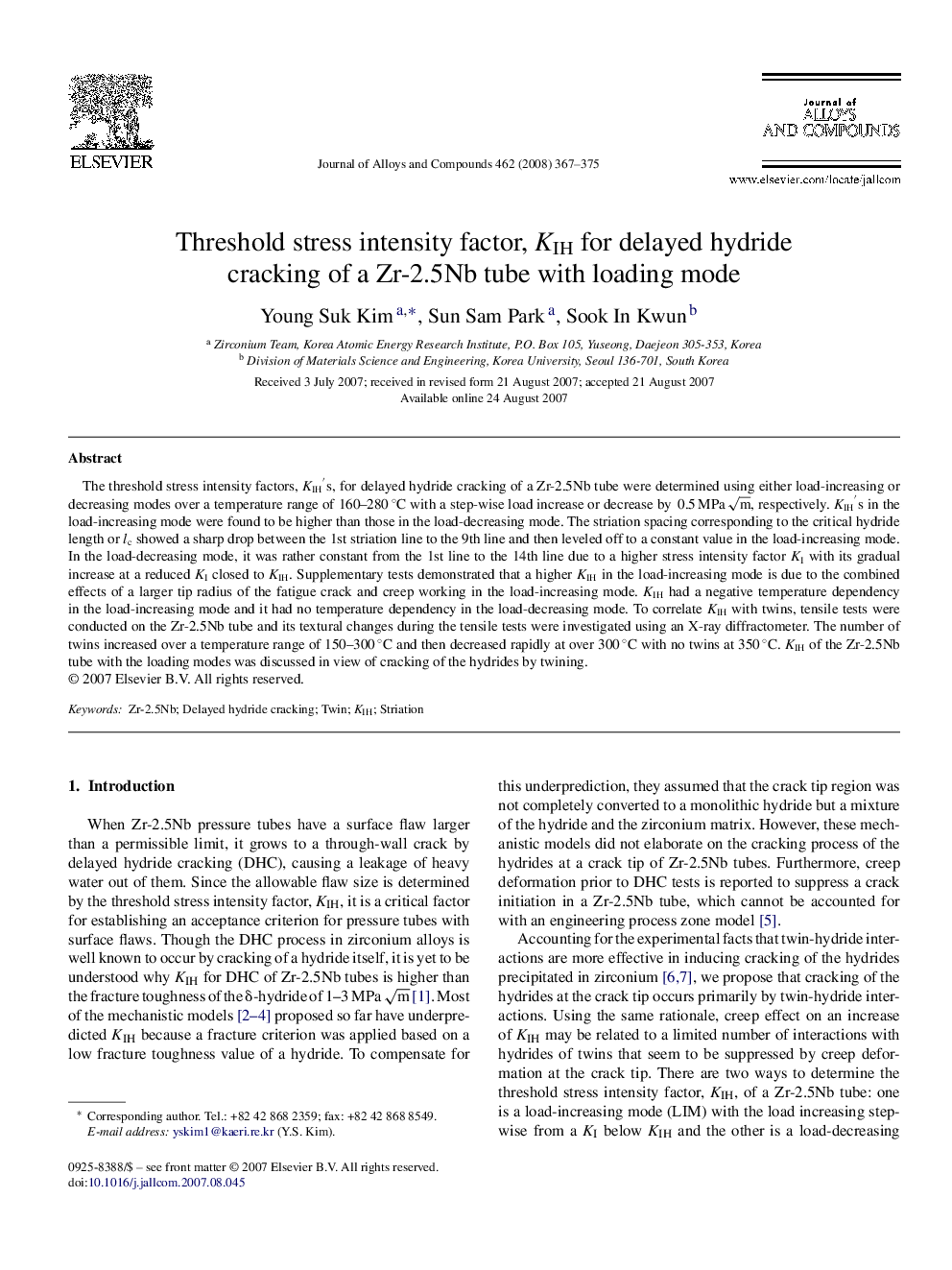| Article ID | Journal | Published Year | Pages | File Type |
|---|---|---|---|---|
| 1623398 | Journal of Alloys and Compounds | 2008 | 9 Pages |
The threshold stress intensity factors, KIH's, for delayed hydride cracking of a Zr-2.5Nb tube were determined using either load-increasing or decreasing modes over a temperature range of 160–280 °C with a step-wise load increase or decrease by 0.5 MPa m, respectively. KIH's in the load-increasing mode were found to be higher than those in the load-decreasing mode. The striation spacing corresponding to the critical hydride length or lc showed a sharp drop between the 1st striation line to the 9th line and then leveled off to a constant value in the load-increasing mode. In the load-decreasing mode, it was rather constant from the 1st line to the 14th line due to a higher stress intensity factor KI with its gradual increase at a reduced KI closed to KIH. Supplementary tests demonstrated that a higher KIH in the load-increasing mode is due to the combined effects of a larger tip radius of the fatigue crack and creep working in the load-increasing mode. KIH had a negative temperature dependency in the load-increasing mode and it had no temperature dependency in the load-decreasing mode. To correlate KIH with twins, tensile tests were conducted on the Zr-2.5Nb tube and its textural changes during the tensile tests were investigated using an X-ray diffractometer. The number of twins increased over a temperature range of 150–300 °C and then decreased rapidly at over 300 °C with no twins at 350 °C. KIH of the Zr-2.5Nb tube with the loading modes was discussed in view of cracking of the hydrides by twining.
